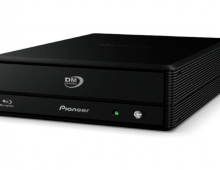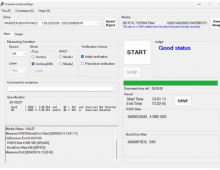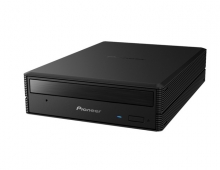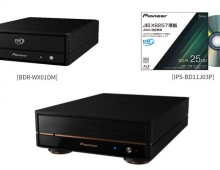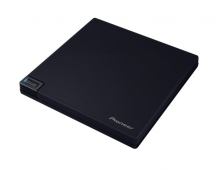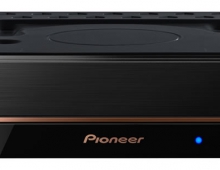
Pioneer Announces New Medium-Term Plan
Pioneer has annoucned a new medium-term plan for the two yearsthrough fiscal 2015, which includes strategic alliances with NTT Docommo, Mitsubishi Electric.
The struggling Japanese maker of car audio and navigation systems said it would issue ¥3.9 billion of shares to Mitsubishi, makingng it the second-largest shareholder with a 7.5% stake. It said it would issue about ¥5.0 billion in shares to NTT DoCoMo, giving the cellular carrier a 6.9% stake.
Pioneer will work to "create new value" at its Car Electronics business. As part of its partnership with Mitsubishi Electric, Pioneer will be utilizing both companies' strengths to jointly develop a "multimedia platform," base technologies for vehicle-linked next-generation automotive equipment.
Through centralized management of the vehicle's various equipment and vehicle-linked functions like telecommunication with other vehicles, Pioneer wants to provide new value in terms of "safety" and "reliability."
At the same time, the company is partnering with NTT DOCOMO, INC. in the "docomo Drive Net" smartphone-based navigation service, to strengthen its cloud-based information service base. By combining and leveraging NTT DOCOMO's strengths of having Japan's largest number of smartphone users and telecommunications infrastructure, as well as a variety of established content and services with Pioneer's wealth of traffic data acquired via information terminals and server technology for processing that information, Pioneer intends to quickly launch a cloud-based information services business for all automobile users.
Pioneer will also review the cost structure to significantly reduce costs and enhance its profitability. With the full-scale implementation of modular designing method in its product development, the company expects to reduce total development man-hours by 20% and total manufacturing man-hours by 10%.
Pioneer will also realign and streamline its manufacturing sites in Japan and overseas. The company will concentrate its Japanese manufacturing on flagship models, and shift manufacturing of other models overseas. In addition, Pioneer will shift overseas manufacturing to Southeast Asia, and to reduce costs by integrating sites? functions.
These measures will be successively implemented in stages from fiscal 2014, and Pioneer is forecasting cost reductions of roughly ¥1.5 billion in fiscal 2015. Pioneer also intends to reduce costs by roughly ¥2.5 billion in fiscal 2014 by pursuing greater efficiency through the mutual use of resources with its alliance partner.
Pioneer will also will work to increase sales at both the consumer-market and OEM businesses.
At the consumer-market business, in car audio Pioneer intends to maintain its high share in developed markets while capturing new demand for products like integrated AV models, especially in emerging markets such as India and Indonesia.
Pioneer's Home Electronics business will leverage its succesful DJ equipment to achieve steady growth. Pioneer expects the market to grow further as it expands to include amateur DJs.
Pioneer will spin off the home AV business and integrate it into a home electronics sales subsidiary in July 2013, and also merge its telephone business subsidiary into this same sales subsidiary in October 2013. Pioneer will also further streamline its optical disc business with a target of July 2013 for reducing the size of the business structure, including headcount, by roughly 40% compared with fiscal 2013.
The Japanese company is also trying concentrate resources in the organic light-emitting diode (OLED) lighting business.
In the medical and healthcare-related business, Pioneer has taken on subcontracted development of medical-use laser blood flow meter. The company is also looking at applications in the field of healthcare in addition to medical use.
Business results
In fiscal 2013 (the year ended March 31), Pioneer reported consolidated net sales grew of 3.5% year on year, to ¥451,841 million.
Although sales of its optical disc drive-related products and consumer-market car navigation systems declined, increased OEM sales of car navigation systems and consumer-market sales of car audio products coupled with the positive effect of the Japanese yen?s depreciation, resulted in an overall increase in net sales.
A net loss of ¥19,552 million was recorded, compared with the previous fiscal year?s &yes;3,670 million net income, reflecting the decline in operating income, combined with ¥6,242 million of restructuring costs and a ¥5,040 million loss on impairment of investment securities recorded as an extraordinary loss, and a reversal of deferred tax assets.
During fiscal 2013, the average value of the Japanese yen declined 4.8% against the U.S. dollar and increased 1.7% against the euro, compared with the previous fiscal year.
During the same period, Pioneer's Car Electronics sales grew 15.4% year on year while its Home Electronics sales declined 22.0% year on year. Although sales of DJ equipment rose, sales of optical disc drive-related products declined substantially, primarily for AV use, reflecting a weak Japanese market.
Pioneer will work to "create new value" at its Car Electronics business. As part of its partnership with Mitsubishi Electric, Pioneer will be utilizing both companies' strengths to jointly develop a "multimedia platform," base technologies for vehicle-linked next-generation automotive equipment.
Through centralized management of the vehicle's various equipment and vehicle-linked functions like telecommunication with other vehicles, Pioneer wants to provide new value in terms of "safety" and "reliability."
At the same time, the company is partnering with NTT DOCOMO, INC. in the "docomo Drive Net" smartphone-based navigation service, to strengthen its cloud-based information service base. By combining and leveraging NTT DOCOMO's strengths of having Japan's largest number of smartphone users and telecommunications infrastructure, as well as a variety of established content and services with Pioneer's wealth of traffic data acquired via information terminals and server technology for processing that information, Pioneer intends to quickly launch a cloud-based information services business for all automobile users.
Pioneer will also review the cost structure to significantly reduce costs and enhance its profitability. With the full-scale implementation of modular designing method in its product development, the company expects to reduce total development man-hours by 20% and total manufacturing man-hours by 10%.
Pioneer will also realign and streamline its manufacturing sites in Japan and overseas. The company will concentrate its Japanese manufacturing on flagship models, and shift manufacturing of other models overseas. In addition, Pioneer will shift overseas manufacturing to Southeast Asia, and to reduce costs by integrating sites? functions.
These measures will be successively implemented in stages from fiscal 2014, and Pioneer is forecasting cost reductions of roughly ¥1.5 billion in fiscal 2015. Pioneer also intends to reduce costs by roughly ¥2.5 billion in fiscal 2014 by pursuing greater efficiency through the mutual use of resources with its alliance partner.
Pioneer will also will work to increase sales at both the consumer-market and OEM businesses.
At the consumer-market business, in car audio Pioneer intends to maintain its high share in developed markets while capturing new demand for products like integrated AV models, especially in emerging markets such as India and Indonesia.
Pioneer's Home Electronics business will leverage its succesful DJ equipment to achieve steady growth. Pioneer expects the market to grow further as it expands to include amateur DJs.
Pioneer will spin off the home AV business and integrate it into a home electronics sales subsidiary in July 2013, and also merge its telephone business subsidiary into this same sales subsidiary in October 2013. Pioneer will also further streamline its optical disc business with a target of July 2013 for reducing the size of the business structure, including headcount, by roughly 40% compared with fiscal 2013.
The Japanese company is also trying concentrate resources in the organic light-emitting diode (OLED) lighting business.
In the medical and healthcare-related business, Pioneer has taken on subcontracted development of medical-use laser blood flow meter. The company is also looking at applications in the field of healthcare in addition to medical use.
Business results
In fiscal 2013 (the year ended March 31), Pioneer reported consolidated net sales grew of 3.5% year on year, to ¥451,841 million.
Although sales of its optical disc drive-related products and consumer-market car navigation systems declined, increased OEM sales of car navigation systems and consumer-market sales of car audio products coupled with the positive effect of the Japanese yen?s depreciation, resulted in an overall increase in net sales.
A net loss of ¥19,552 million was recorded, compared with the previous fiscal year?s &yes;3,670 million net income, reflecting the decline in operating income, combined with ¥6,242 million of restructuring costs and a ¥5,040 million loss on impairment of investment securities recorded as an extraordinary loss, and a reversal of deferred tax assets.
During fiscal 2013, the average value of the Japanese yen declined 4.8% against the U.S. dollar and increased 1.7% against the euro, compared with the previous fiscal year.
During the same period, Pioneer's Car Electronics sales grew 15.4% year on year while its Home Electronics sales declined 22.0% year on year. Although sales of DJ equipment rose, sales of optical disc drive-related products declined substantially, primarily for AV use, reflecting a weak Japanese market.

